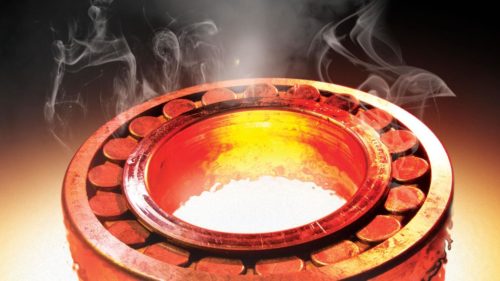
Material data sheets usually list several temperature values – what do they mean, and how do you use them to help select the best material for your application?
These values are different for thermoplastics (defined as materials which can be remelted) and thermosets (materials which are crosslinked and therefore cannot be remelted). Today, we deal with the true thermoplastics.
Melt Temperature
Temperature when a material goes from a solid to a liquid, obviously a “limiting” value!
Glass Transition (Tg) Temperature
Temperature when an amorphous thermoplastic (think acrylic or ABS) becomes soft and rubbery. This feature allows certain resins to be thermoformed, though it can be problematic in service.
Continuous Use Temperature
This value is technically defined as the maximum ambient service temperature (in air) that a material can withstand while retaining 50% of its initial physical properties after long term exposure (100,000 hours, or about 11 years) with no load applied. It’s a function of thermal degradation through oxidation.
Heat Deflection (or Distortion) Temperature
This is the temperature at which a 1/2” thick test bar, loaded to a specified bending stress, deflects by .010″ in under a given load (either 66 psi or [more commonly] 264 psi. This is the “working load” temperature, indicating the limit a material can withstand under load.
(NOTE – “heat stabilized” plastics have an antioxidant added, it can add to Continuous Use Temperature but does NOT help Heat Deflection Temperature!)
So – functionally, what does this mean? Take PTFE (“Teflon®”) – everyone knows it’s a 500F material, but that is continuous use – at about 160F you can push your finger into it (Heat Deflection Temperature).
Some Guidelines
- In general, with the lower temperature thermoplastics the Heat Deflection Temperature is at or above the Continuous Use Temperature.
- In general, it’s the opposite with the higher performance thermoplastics as the Continuous Use Temperature is higher than the Heat Deflection Temperature (see the PTFE example, above)
- Most thermoplastics can withstand short term excursions beyond the values given, as long as the loads are not near the “safe load limits” for the material. When passing the Continuous Use Temperature values – parts usually wear out long before the 11 year thermal degradation means anything.
This last point leads to a discussion on Dynamic Modulus Analysis. This is where viscoelastic materials’ properties change with increases in temperature. That one is a topic for another blog post – stay tuned!
Tom Connelly is a self proclaimed “Street Engineer” with over 40 years in the plastics industry.
